Top 10 Most Dangerous Jobs in the Construction Field: Construction Accident Statistics
Construction workers provide a vital service—the homes, stores, factories, and restaurants people need wouldn’t exist without them. Unfortunately, their work comes with a significant risk of serious and sometimes fatal injuries. From falls to heavy machinery accidents, construction workers face a variety of unsafe scenarios, and some professions are especially hazardous.
Learning about construction site safety and what to do if an injury occurs on the job can help protect you and others against the potential risks you face daily.
Overall Construction Accident Statistics
Construction jobs are among the most dangerous in the world, with workers experiencing the most fatalities of any industry in 2023. Although fatal work injuries have declined in recent years, the number of deaths in construction remains troubling.
In 2023, the number of fatal construction injuries was 1,075, compared to 930 for the next highest industry. Of those deaths, the National Safety Council classified 1,029 fatal injuries as preventable. In other words, lives could be saved with better adherence to safety standards.
In 2022, approximately 1 in 5 workplace deaths occurred in the construction industry, and nearly 40 percent of them resulted from falls, slips, and trips. This same trend was true for the decade prior. From 2011 to 2021, 35 percent of construction deaths were the result of falls, while 17 percent occurred when an object struck a worker.
The rate of non-fatal workplace injuries is also concerning. In 2023, the construction industry saw 173,200 worker injuries, ranging from relatively minor injuries requiring a day or two of recovery to life-altering accidents. Some of the worst injuries workers have experienced are brain trauma, spinal damage, and third-degree burns.
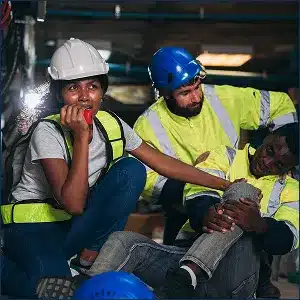
There were 1,075 fatal construction
injuries in 2023.
Standout statistics:
- There were 1,075 fatal construction injuries in 2023.
- 1,029 fatal injuries in 2023 were preventable.
- 40 percent of construction fatalities in 2022 resulted from slips, trips, and falls.
1,029 fatal injuries in 2023 were preventable.
40 percent of construction fatalities in 2022 resulted from slips, trips, and falls.

Top 10 Most Dangerous Jobs in Construction
The construction industry is full of high-risk jobs. These professions are more likely to result in deaths and severe injuries because of the nature, location, and requirements of the work.
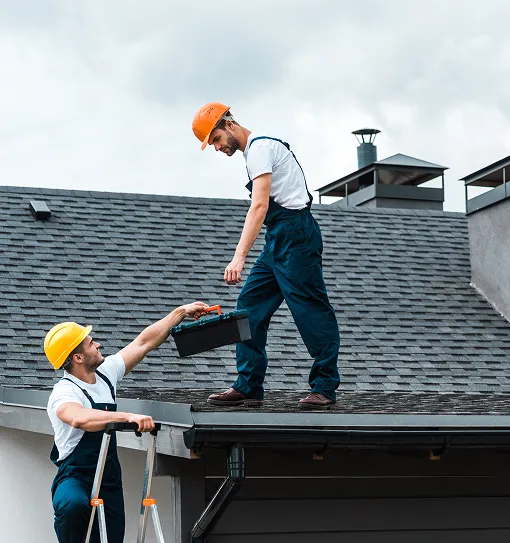
1. Roofers
- Job overview: Roofers are responsible for installing, repairing, and replacing roofs of structures, including residential and commercial buildings. They inspect and evaluate new and existing roofs to confirm they’re structurally safe, can withstand different weather conditions, and fully protect the items and people inside the building.
- Key risks and hazards: Constantly working at heights, sometimes multiple stories in the air and in severe weather, puts roofers at significant risk of falls from ladders, scaffolds, and the roofs themselves. These professionals also handle tools and heavy machinery, may suffer burns from hot substances, and can come into contact with harmful materials, including asbestos and paint fumes.
- Fatality and injury statistics: Roofing has one of the highest rates of injuries and fatalities of all occupations. In 2023, roofing contractors experienced 110 deaths due to falls, slips, and trips.
- Essential safety measures: Wearing safety gear, including harnesses and lanyards, is critical when working on a roof. Workers must also place and use ladders correctly and handle materials properly.
2. Steel/Ironworkers
- Job overview: Steel and ironworkers install metal to form and support structures, including bridges, roads, and buildings. They generally use bolts and welding tools to secure the materials and ensure stability.
- Key risks and hazards: The tools steel and ironworkers use can cause severe injuries, including cuts and burns. Because they often work at great heights, these workers are also susceptible to falls.
- Fatality and injury statistics: Construction environments involving iron and steelwork are among the most dangerous. In 2020, 16 fatal injuries occurred in this profession.
- Essential safety measures: Workers can protect themselves by using appropriate personal protective equipment (PPE) such as harnesses, hard hats, boots, gloves, and safety glasses. Studies show steel and ironworkers are four times more likely to experience an injury if they’re not using PPE.
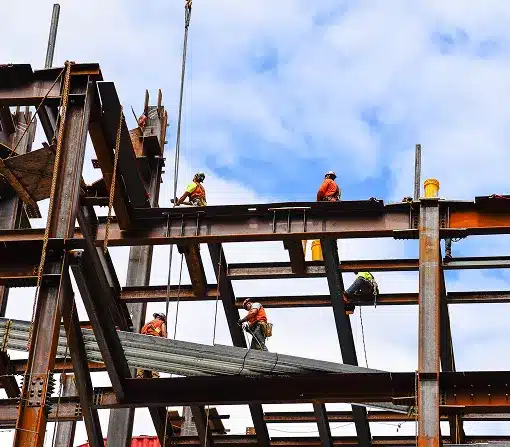
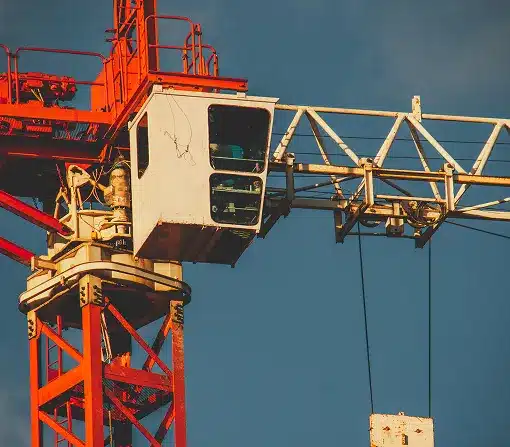
3. Crane Operators
- Job overview: Crane operators are responsible for lifting and moving heavy materials. They use crane controls to position loads in the correct spots on or around a structure and must monitor the site carefully so they don’t harm other workers.
- Key risks and hazards: Heat stress and fatigue often affect crane operators and can make accidents more likely. Workers can fall when entering or exiting the equipment or suffer an injury from falling objects.
- Fatality and injury statistics: From 2011 to 2017, around half of fatal crane injuries involved an object or equipment striking a worker. The worker operating the crane was the injured individual in 22 percent of these cases.
- Essential safety measures: Crane malfunctions significantly increase the chances of injuries, so performing pre-operation inspections is essential. Operators should also always wear PPE, including hard hats, safety glasses, and high-visibility clothing.
4. Demolition Workers
- Job overview: The construction process often involves dismantling or destroying existing structures or parts of buildings. Demolition workers carry out these tasks, removing fixtures, fittings, and doors before knocking down the structure and taking away any debris.
- Key risks and hazards: Demolition workers face the same dangers as other construction workers, along with added hazards such as dust, structural instability, and fires. They are more likely to come into contact with asbestos and other toxic materials, especially in demolitions of older buildings.
- Fatality and injury statistics: In 2020, 78 workers suffered fatal injuries while performing demolition and site preparation. This was a slight decrease from 88 fatalities the previous year.
- Essential safety measures: PPE is key to demolition safety, particularly goggles, hard hats, and respirators to prevent dust exposure. Workers should also perform hazard assessments before beginning any job.
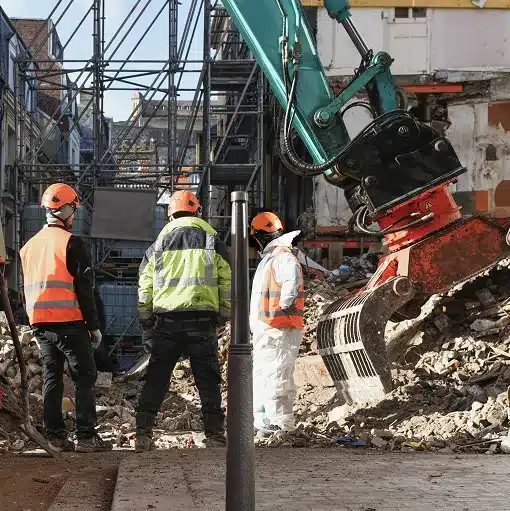
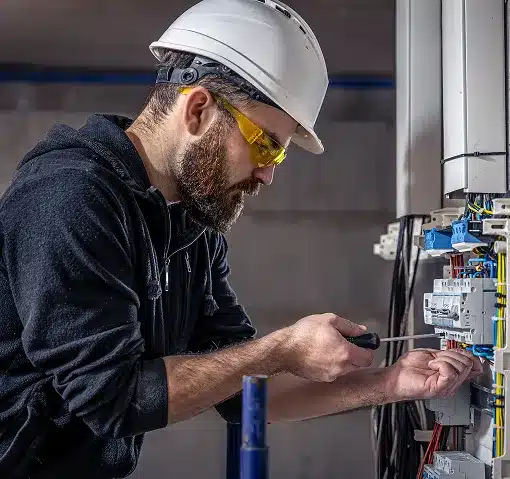
5. Electricians (Construction)
- Job overview: Electricians on construction sites design and install electrical systems to provide power and lighting. They work on residential buildings as well as commercial and industrial facilities.
- Key risks and hazards: The greatest risk for electricians is electrocution, when an electrical current flows through the body and causes injury or death. In addition, workers in this area sometimes suffer from burns, falls, and exposure to hazardous materials.
- Fatality and injury statistics: The construction industry saw 855 electrician fatalities from 2011 to 2023. In 2021, around 8 percent of construction worker deaths resulted from electrocution.
- Essential safety measures: Electricians must wear insulated gloves, protective footwear, and non-conductive footwear to protect against electrocution and burns. Regularly inspecting tools and equipment and following proper grounding procedures is also crucial.
6. Heavy Equipment Operators
- Job overview: Heavy equipment operators use, maintain, and inspect heavy machinery on construction sites, including excavators, bulldozers, cranes, dump trucks, and forklifts. They use this equipment to move and handle materials during the construction of buildings, bridges, roads, and other structures.
- Key risks and hazards: Rollovers can occur if an operator doesn’t handle a piece of equipment correctly. Workers can also experience injuries due to mechanical accidents, electricity, and strikes from buckets, debris, and objects.
- Fatality and injury statistics: Around 75 percent of struck-by fatalities involve heavy equipment, such as trucks or cranes. In one study, rollovers were the main cause of death for heavy equipment operators.
- Essential safety measures: Regular equipment inspections, spotters, and awareness of unsafe conditions, such as icy, wet, or snowy steps or tracks, can help prevent equipment and forklift accidents. Operators should also wear PPE, including gloves, hard hats, reflective clothing, and hearing protection.
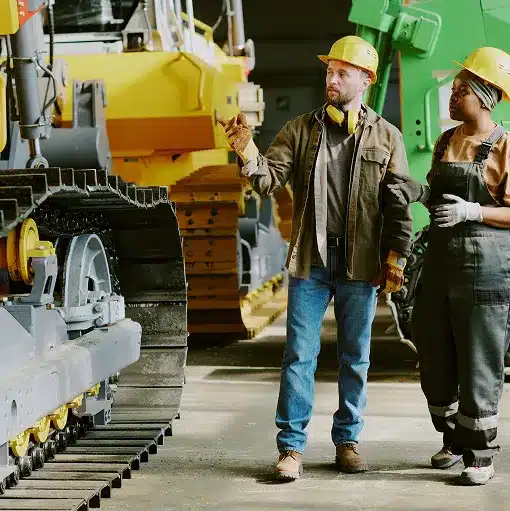
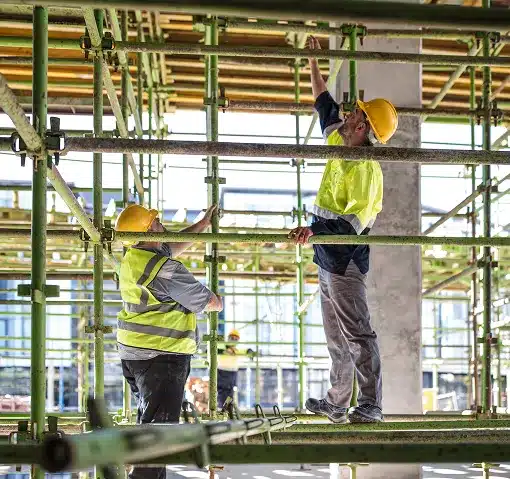
7. Scaffolders
- Job overview: Scaffolders put together and take apart temporary structures, which other workers use to access high areas of buildings. They inspect the scaffolding to confirm it’s secure and safe.
- Key risks and hazards: Falls are the number one risk for scaffolders, and these incidents are more common when weather conditions and wind are at play. Falling objects such as tools and work materials, contact with overhead power lines, and structural collapses are also possible.
- Fatality and injury statistics: In 2020, 3,400 injuries and 56 work-related deaths occurred in the U.S. due to unsafe scaffolding. Improper scaffolding is one of the most frequent safety violations in the construction industry.
- Essential safety measures: Scaffolders should wear body harnesses, lanyards, and lifelines to prevent falls, and the scaffolding should have a guardrail system. Workers should also be careful to avoid overloading, which can cause a scaffolding accident.
8. Welders & Cutters
- Job overview: Welders and cutters use equipment to join or separate metal parts during construction. They use torches and other equipment to melt and fuse or trim metal objects.
- Key risks and hazards: The extreme heat used during welding is the greatest hazard for this profession. Welders and cutters can suffer exposure to ultraviolet radiation, resulting in burns and eye damage, as well as electrical shock and cuts.
- Fatality and injury statistics: In 2022, the construction industry experienced 53 fatal injuries among welders, cutters, solderers, and brazers. Dozens of welders become ill after inhaling metal fumes every year.
- Essential safety measures: Protective equipment is the first line of defense for welders—they should wear face shields, spark-resistant clothing, and hand protection. Another vital step is ensuring the area has adequate ventilation and the worker has respiratory protection.
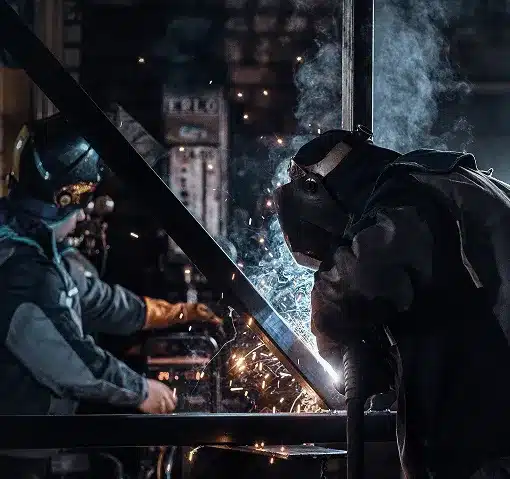

9. Framers and Carpenters
- Job overview: Framers and carpenters create the skeleton for a building using wood, plastic, and other materials. They measure, cut, and install structural frames based on blueprints and building plans.
- Key risks and hazards: During their work, framers and carpenters use power tools, including nail guns and saws, which can inflict serious injuries. They also frequently work at heights.
- Fatality and injury statistics: In 2020, framers and carpenters experienced 79 fatal injuries, down from 99 the year before. These professionals suffered nearly 12,000 nonfatal injuries that same year.
- Essential safety measures: Workers completing these tasks should wear protective glasses when cutting materials, respirators when applying adhesives, and steel-toed boots at all times. They also need to regularly inspect and maintain their tools.
10. General Laborers
- Job overview: General laborers are involved in many of the tasks around a construction site, helping other workers by supplying and holding tools and materials. They often assist electricians, plumbers, and carpenters.
- Key risks and hazards: Construction laborers face virtually every kind of danger on the site, including falls and equipment or object strikes. If they’re not fully trained, they can also get injured when working with or around unfamiliar tools and machinery.
- Fatality and injury statistics: In 2022, 1,092 total fatalities occurred in the construction industry, including general laborers. Of these fatalities, 412 were due to falls, trips, and slips.
- Essential safety measures: General laborers should wear the same PPE as other professionals, including safety glasses, hard hats, and boots. When working in high areas, they should also use guardrails and safety nets to prevent falls.
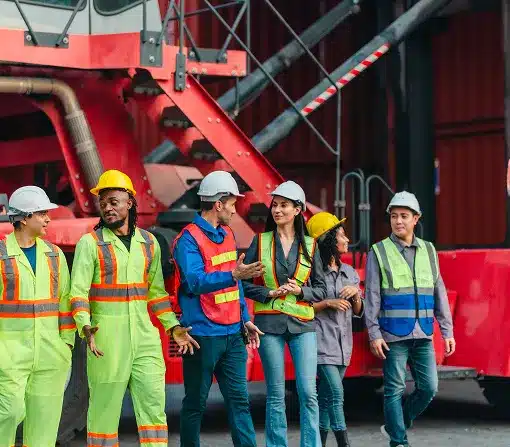
Who is Responsible for Keeping Construction Workers Safe?
Construction workers can protect themselves by following safety protocols and measures. However, their employers are ultimately responsible for making the site a safe place.
Regulations in the Construction Industry
The Occupational Safety and Health Administration (OSHA) has strict regulations for the construction industry. These requirements address a wide range of issues, including:
- PPE
- Fall protection
- Hazard communication, including labels and signs
- Heavy equipment use
- Fire prevention
OSHA sets and enforces these regulations, performing inspections of construction sites and making note of any safety violations. Failure to comply with their requirements can result in substantial fines. In 2024, the administration issued 15,900 citations after performing complete inspections of construction companies. In addition, OSHA provides companies with resources and training programs so they can promote safe practices.
Individual states also have regulations in place to protect the health and safety of construction workers. For example, New York’s requirements include specific safety training, daily inspections of construction and demolition sites, and registration for certain types of construction.
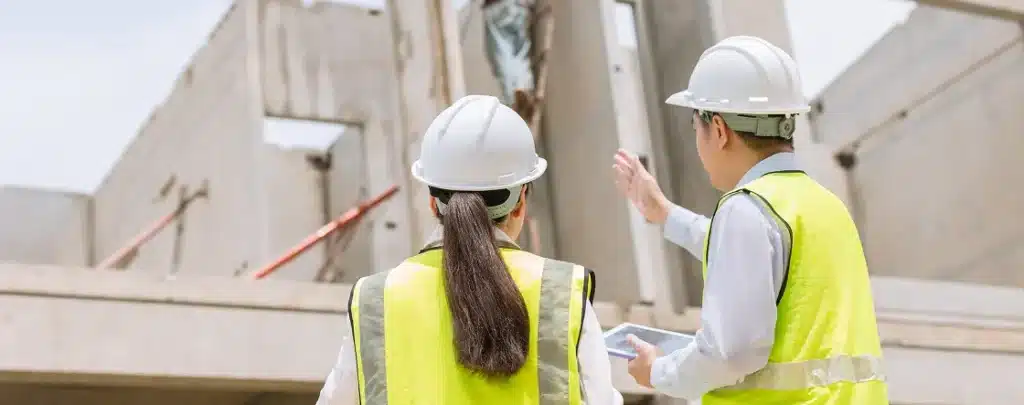
Your Rights as a Construction Worker & Safety Costs
Construction companies have an obligation to protect their employees from worksite hazards. Failing to do so is not only irresponsible but expensive. According to a recent study, construction fatalities in the U.S. cost $5.3 million, on average. Comprehensive safety training and procedures cost substantially less, making them a worthwhile investment for every organization.
If you suffer an injury on the job, you can file a workers’ compensation claim with your employer. Construction companies pay an average of $254 per month for workers’ compensation coverage, which pays for your medical treatment and helps offset your lost wages until you can return to work.
Some workers injured on the job can also file lawsuits against third parties responsible for the accident. For example, if you suffered broken bones and lacerations because of defective equipment or tools, you may have the option to sue the manufacturer. A construction accident lawyer can help you navigate workers’ compensation and civil claims so you receive fair compensation for your injuries.
Protect Your Rights After a Construction Accident
Every construction worker has the right to a safe workplace, and you can help make that environment a reality. Awareness empowers you to get proactive about jobsite safety, encourage others to follow the necessary procedures, and report unsafe conditions when you see them.
However, the full responsibility doesn’t fall on individual workers. Construction companies have a legal and moral responsibility to protect their employees by maintaining safe working conditions. Performing inspections, implementing a training program, and providing adequate PPE are central to that effort. At the same time, these companies can take steps to support their workers’ mental health and well-being by recognizing the likelihood of high stress and chronic pain in these roles.
If you’ve suffered an injury as a construction worker, an attorney at Shulman & Hill can help you explore your options. Contact us online or call us at 212-221-1000 to discuss your claim.
